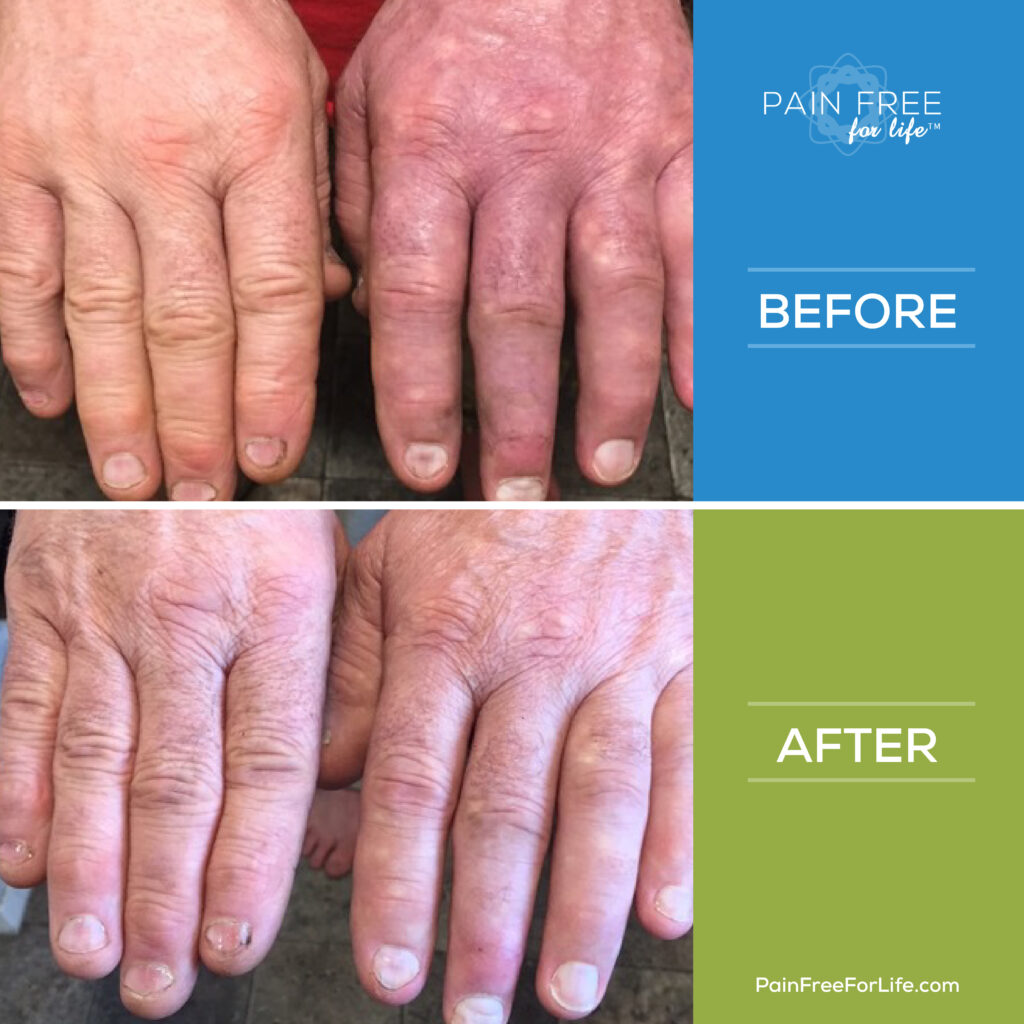
The pain began after that football injury, or perhaps that car accident. Since then, it just hasn’t stopped. It’s burning pain with pressure or pins and needles that over time just hasn’t been held at bay in one place. This is Complex Regional Pain Syndrome, or CRPS. And, conventional CRPS pain relief treatments can be just as frustrating as the never-ending pain that comes with it.
What Is Complex Regional Pain Syndrome?
Typically CRPS develops after an injury or some other traumatic event to the body where the pain left over is more than what you’d normally expect. It isn’t very common and like many chronic pain diagnosis, isn’t well understood. To add to the mystery, Type 1—the most common type of CRPS—doesn’t have to involve an injury to the affected area. Type 2, on the other hand, is similar but involves a distinct injury to the area.
Regardless of which type you have, the symptoms are pretty much the same:
- Skin Sensitivity
- Muscle spasms and weakness
- Stiffness and joint damage
- Continuous pain in the affected limb
- Changes in the skin and hair growth of the affected area
As the condition progresses many patients experience coldness in the area as well as skin changes, such as paleness. Once this happens, treatment typically can’t help. Sometimes it goes away on its own but for many patients, symptoms can go for months and years without relief. To help with that, doctors encourage treatment early.
But, what kind of treatment?
Conventional CRPS Pain Relief Treatments
To treat CRPS, it’s important to realize that there isn’t a single test or exam that is used to diagnose it. In addition to looking at medical history, doctors use a series of scans and tests to rule out other things and see if some common, telltale signs are there so that a diagnosis can be made. Because of this, conventional diagnosis and treatment can be tricky.
The conventional approach to CRPS uses various medications, such as over-the-counter pain relievers or even stronger ones prescribed by the doctor. As in other chronic pain conditions, doctors often rely on antidepressants and corticosteroids along with nerve medications. Aside from medications, heat therapy, physical therapy, and even psychological therapy techniques can be used to help ease a patient’s pain.
Almost all available conventional pain relief treatments for CRPS simply work to mask your pain, easing the never-ending symptoms without changing the fact that you’re still in the grip of the disease. Unfortunately, they often come with side effects of their own, which can sometimes be worse than the disease itself. And they do nothing to encourage your body to heal itself. All you can do is just hope that your CRPS will eventually go into remission or go away all together.
The Hache Protocol™ and Microcurrent: A Natural (and Effective) Approach to CRPS Relief
It might be hard to believe after the guessing game of hits and misses that comes with conventional treatment, but there is a way to stop the pain altogether and live a better life. The Hache Protocol for Pain Resolution™ takes a holistic approach to treatment for Complex Regional Pain Syndrome so patients can avoid the side effects and limited effectiveness of conventional treatments.
What’s involved? Well, the Hache Protocol™ focuses on five pillars of treatment:
- Stress Reduction
- Nutrition
- Fitness
- Sleep, and
- Microcurrent
The first four are familiar to most people who suffer from CRPS, but many chronic pain patients aren’t as familiar with microcurrent as a powerful therapy for pain resolution.
Most people who have heard of microcurrent are familiar with it as a way to achieve younger looking skin without going under the knife or submitting to botox injections. But for chronic pain patients, the value is more than skin deep.
Every part of your body has a frequency and when that frequency is disrupted, you’re in pain. It doesn’t matter if it’s due to a syndrome, like Complex Regional Pain Syndrome, or the injury that might’ve caused it. In both cases a microcurrent device can zero in on the frequency that’s been disrupted and then help to repair damage to the tissue.
Many patients draw parallels to a TENS unit and yes, the two devices are similar. But, where a TENS unit disrupts pain signals with extremely high voltage which essentially paralyzes the nerves, a microcurrent device works to eliminate the pain at the source. The reason is so effective has to do with the electrical frequencies the microcurrent device uses. Unlike any other type of electrotherapy, microcurrent operates in the same range of frequencies as the body’s own. In essence, it communicates with the body in its own language.
When the right protocols are used, microcurrent can actually help your body re-learn how to heal itself. Though not a cure-all, microcurrent helps your body heal and restore the frequency that has been disrupted. Using it in conjunction with all the other elements in the Hache Protocol™ results in even more powerful healing and has helped many individuals say goodbye to the pain of CRPS forever.
The beauty of the Hache Protocol™ doesn’t lie in a magic pill. We’ve all heard fairy tales and a promise that one little pill will fix everything is one indeed. The Hache Protocol™ is a whole body approach and it does take commitment and dedication, but isn’t living better and regaining a pain free lifestyle worth it?
Learn How to Use the Hache Protocol for CRPS Pain Relief
Complex Regional Pain Syndrome often goes hand in hand with other conditions. People with CRPS tend to have high levels of inflammation and are more likely than average to also suffer from autoimmune conditions.
Download our free ebook, Autoimmune Solutions : A Practical Guidebook to Overcoming Autoimmune Disease, to learn more about specific ways to use the Hache Protocol™ and microcurrent therapy to reduce pain and inflammation and take back your life from CRPS and related conditions!






